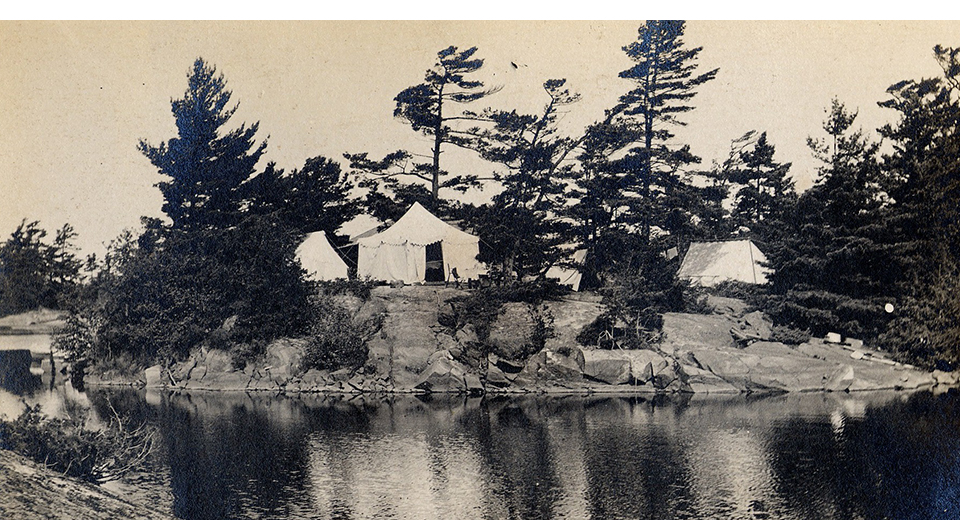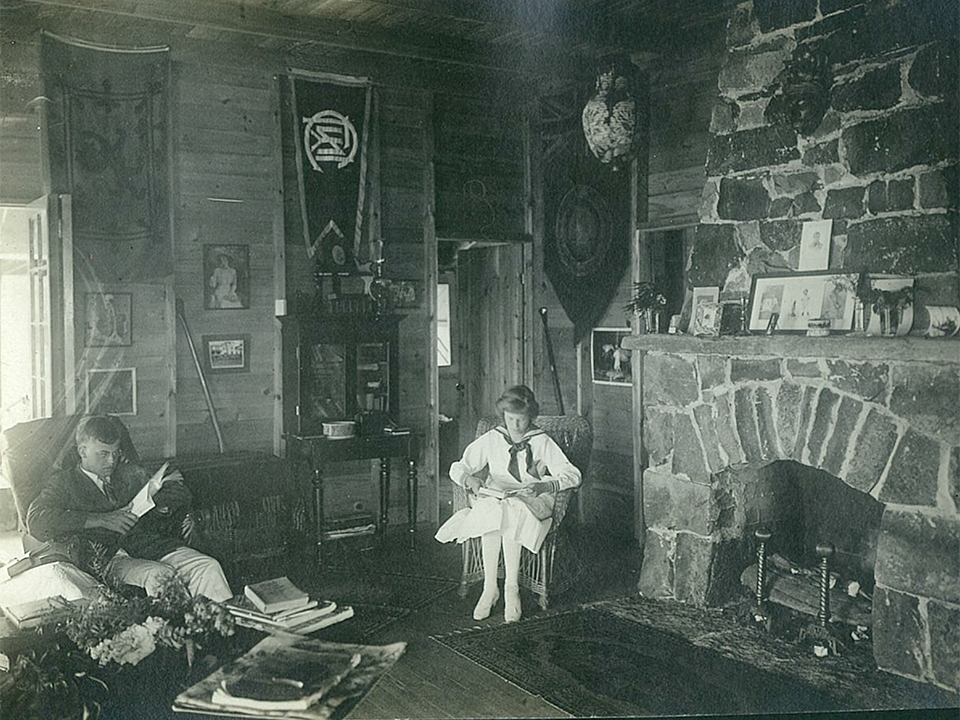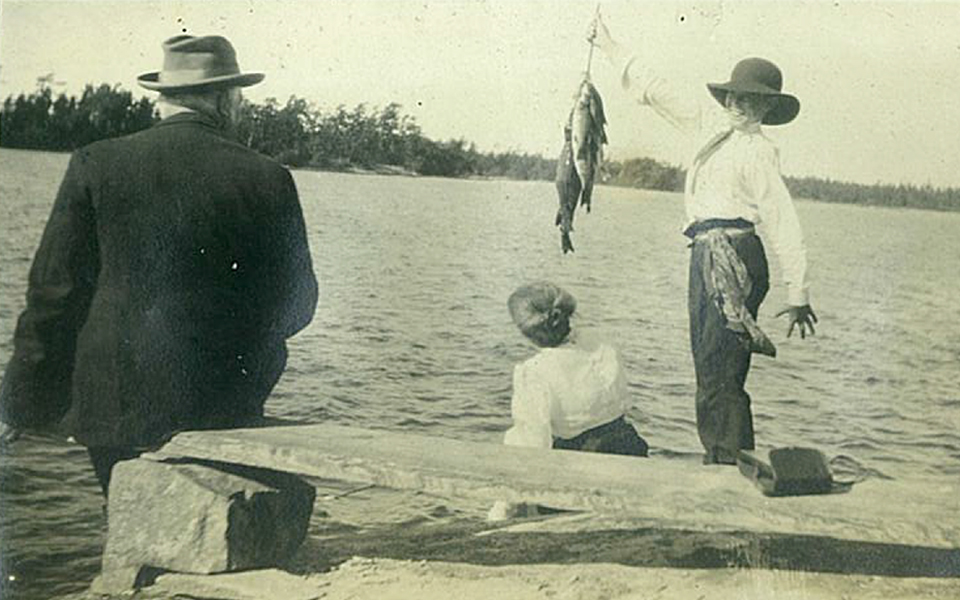
When I was spending all summer at Cratloe or Log Cabin, during the 1940s and ’50s, there was plenty of time to explore the Inlet and learn the various names of landmarks and waterways. While many of these names are still in use, their origins may be a mystery to newcomers and younger generations alike. The following brief notes are based on my memory and stories passed on from my mother. Their accuracy cannot be vouched for but, who cares about accuracy if it is a good story! I hope that others might want to tell their own stories of names in Bayfield and Nares — or provide alternative versions to these!
This is the small island on south side of the main inlet in between Cratloe Island (Tony Ketchum) and Puckwana (Ned Martin). It is well known for its great jumping rock and pretty good bass fishing but why is it called Skin Skunk?
My grandmother, Susie Ormsby, was one of the first to spend summers in Nares starting in 1909. She purchased Puckwana Island and the family lived primarily in tents supplemented by a simple “shack” for use in bad weather. Susie had three children and the eldest, Anthony was a teenager when they first came to Nares. Susie’s husband Jack was a keen gardener who much preferred tending to his flowers in Toronto than sleeping rough in the Georgian Bay so Anthony was often the “man” of the family.
One summer before 1914 it was discovered that a skunk had made its home underneath the shack and it was considered desirable to persuade it to move! Anthony was given the task. Unfortunately, he also had access to a 22 rifle and he decided that eliminating the skunk was the simplest solution. The results were predictable and unpleasant! In order to mollify his upset mother he took the smelly carcass to a nearby island and skinned it with the idea of making her a beautiful fur muff. It is unknown whether the gift was accepted but the event is memorialized in the name of the island – Skin Skunk! Anthony Ormsby joined up in 1914 and was killed flying in France in 1916.

This is the channel that starts at Nayasha (Perdues) and runs between the mainland on the west and the Cornish and Gooch Islands on the east. It is quiet water even on the windiest days.
Nayasha was built around 1909 by the Cassels family and its spacious verandahs were a perfect spot for the small Nares community to gather for Sunday worship and socializing. After “church” the children could swim and play in the sheltered channel which became known as the Sunday River. The first Nares Inlet regattas were also held here until, in the 1920s, they moved up to Frank Thompson’s new cottage, The Reefs. According to my mother, the Sunday River was a very popular destination for courting couples. On most days (except Sundays!) it was quiet, warm and secluded – and so, it remains.

The last island in the Inlet before Nares Landing is now owned by the Foxes and was previously the Rod & Gun Club. Before the Scales built the road and Springhaven Lodge, cottagers had little reason to venture to the bottom of the Inlet. However, at least once a summer an expedition would be mounted and the destination would often be a picnic on this beautiful island. There was also good fishing off the west end and I remember being taken down to what we called “the Island that likes to be visited” by my brother Tony. Often we would go when it was too windy to head out towards the open and the paddle down was a breeze. After an afternoon of fishing and swimming the trip back against the wind was exhausting. So visits to what we imagined was this very lonely island were few and far between
— by Nick Ketchum